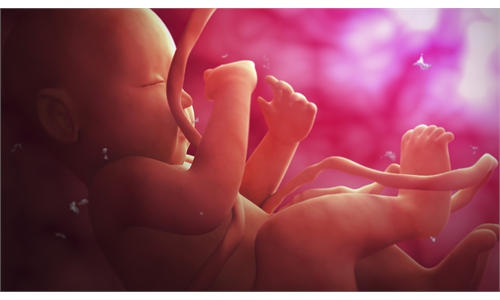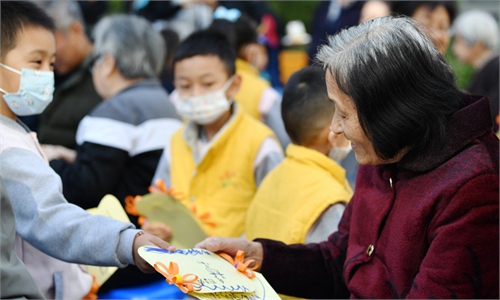
Illustration: Chen Xia/Global Times
To counter rapidly declining birth rates, China's central authorities issued new guidelines last Tuesday, which introduced a raft of policies for prenatal and postnatal support to inspire married couples to give birth to more children. Concerned about a possible workforce shortage sometime after 2030, the government is expected to work out other favorable measures to help reduce the cost of childbirth, parenting and education, in order to provide persistent support to a booming economy.In addition to provisions of better maternal care and childcare services, the new guideline, promulgated by the National Health Commission, the National Development and Reform Commission, the People's Bank of China, and 14 other departments of the State Council, the cabinet, has requested local governments to offer material support and larger incentive in taxation and housing to the couples willing to have two or three children.
China's birth rate has been dropping for five consecutive years since 2017, falling to 7.52 per 1,000 people last year, from 8.52 in 2020, data provided by the National Bureau of Statistics showed. Chinese mothers gave birth to just 10.62 million babies in 2021, plunging 11.5 percent from 2020. The number of births was just enough to outnumber deaths, with China's population growing by only 480,000 in 2021 to a total of 1.4126 billion. The natural growth rate of population fell to 0.034 percent, the lowest since 1960.
The sudden, precipitous drop of the birth rates means China's population has peaked or plateaued - a dire phenomenon that will have profound impact on evolution of Chinese society and Chinese economy, because manpower consists of a prime engine of any economy.
To make things more complicated, China, like East Asia's Japan and South Korea, is also facing a rising trend of aging population - largely owing to the significantly improved living standards which drive up Chinese people's average life expectancy at 77.8 years.
For almost four decades, China has leveraged on the so-called demographic dividend to propel infrastructure construction, consumer consumption and vigorous economic development. As its total population is forecasted to decline before 2025, the demographic dividend will gradually disappear or even go into debt. At the end of 2021, aging people of more than 60 years old in the country reached 264 million, according to official data.
To prevent the population from shrinking so soon, China's central government, since 2020, has initiated a series of reforms, including outlawing non-campus expensive tutoring services to reduce children's education cost, and bringing down and stabilizing urban housing prices, to encourage urban couples to have more children.
Besides, Chinese government has proactively explored advantages in areas beyond the demographic dividend, including college and occupational education, to fully improve the overall quality of Chinese population, because the productivity of an economic entity is tethered not only to the number of workers, but also the educational level and skill of them.
According to the demographers, the steep drop in new baby births stem from a combination of factors, like a general decrease in the number of women of child-bearing age, a constant decrease in fertility, changes in societal attitudes towards child-bearing, and delays of marriage by young people. The COVID-19 pandemic has also negatively impacted couples to give birth to children since early 2020.
And, China has become a highly digitalized and relatively affluent society now, in which young women have very much progressed in independence and self-esteem, which drives them to alienate from traditional Chinese values that favor having a bigger family. Now, more women only want to have one child so that they have more time to pursue professional achievements.
In 2021, China's net added population stood only at 480,000, less than one-tenth of 2018, which the country had a net population increase of 5.3 million. Over the past several years, China's annual new births, women's fertility rate and birth rate have all plunged. The country's 7th Census in 2020 showed women's fertility rate ran as low as 1.3, making China one of the countries with the lowest fertility rates in the world.
Now, the central government has vowed to foster a fertility-friendly society and fertility-friendly workplaces - a new concept and agenda that will have great effect on Chinese employers, for them to phase in flexible working time and practices and longer maternity leaves for child-bearing women employees.
In the future, China needs to constantly increase economic incentives, including cash handouts, real estate subsidies and taxation privileges to encourage couples to have more babies. At the same time, the whole society should pivot toward to supporting couples' parenting, respecting pregnant women and mothers, and caring for children's education, health and wellbeing. After all, only a people-oriented society can help blunt population plunge and prolong economic growth.
The author is an editor with the Global Times. bizopinion@globaltimes.com.cn



